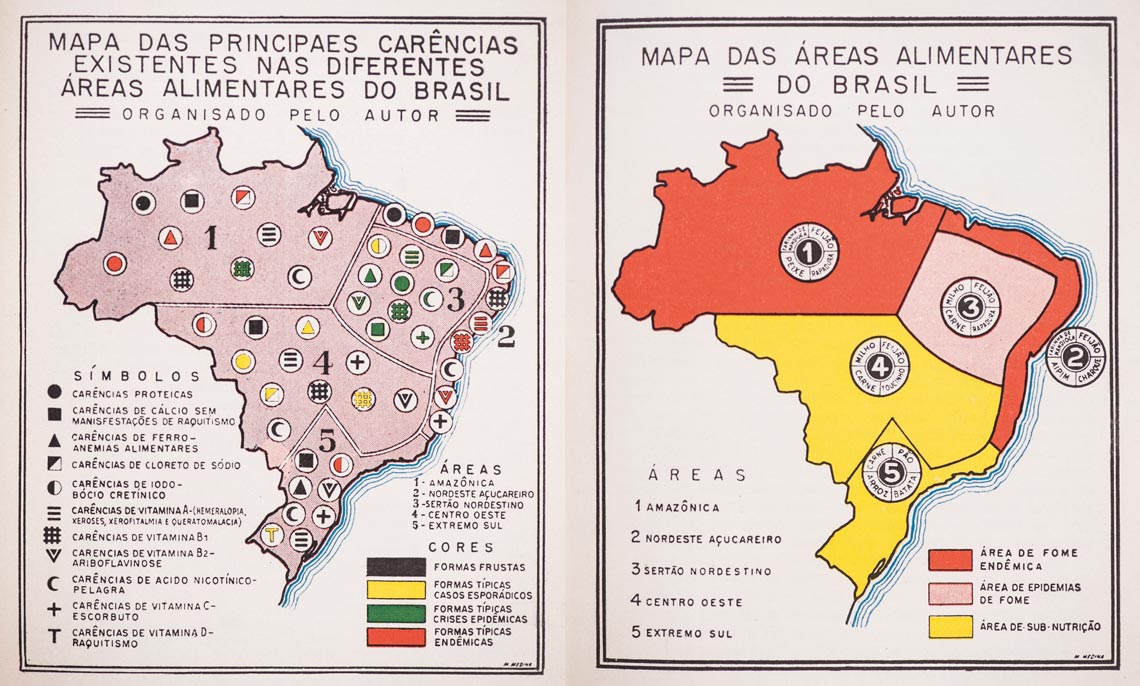In 2022, almost 50 years after the death of physician Josué Apolônio de Castro (1908–1973), of Pernambuco, who identified the deepest roots of malnutrition, Brazil has made its return to the United Nations’ Hunger Map, from which it has been absent since 2014. In Brazil, 33 million people, equivalent to 15% of the population, experience so-called severe food insecurity—when a person goes hungry because they do not have money to buy food. Another 33 million experience moderate food insecurity, because they do not have enough food. Less than half of the population enjoys complete food security, knowing they will have a satisfactory quantity and quality of food in the following days.
Josué de Castro showed that hunger is not inevitable, but the result of population growth, war, or climate catastrophes. He was innovative in his in-depth analysis of the social and economic causes of hunger, previously only portrayed as something episodic in newspapers and novels from the early 20th century, as can be seen in O quinze (The fifteen; José Olympio, 2015), by writer Rachel de Queiroz (1910–2003) of Ceará, and Trash (Peter Owen, 1978), a book by José Américo de Almeida (1887–1980) of Paraíba. In a 2020 article from the journal História, Ciência, Saúde – Manguinhos, historian Adriana Salay Leme, a doctoral student at the University of São Paulo (USP), describes how in 1932, to prevent migrants fleeing hunger and drought from reaching the cities, the federal government created seven concentration camps in the Northeast—the largest of which, in Crato, Ceará, housed nearly 60,000 people.
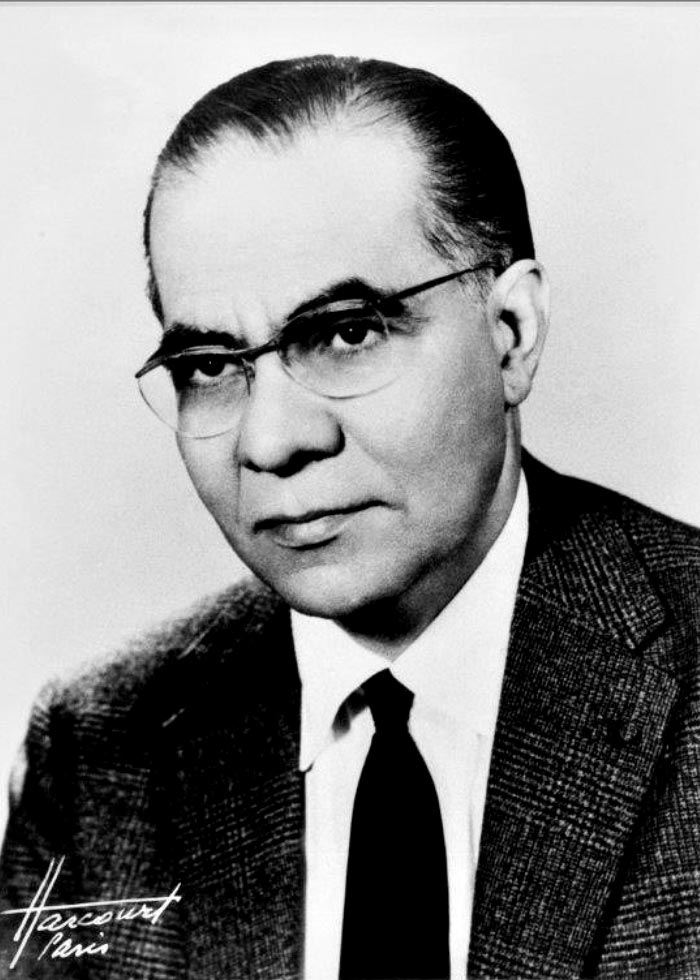
Josué de Castro Center for Studies and ResearchPortrait from 1963 of the physician and politician from the Brazilian state of PernambucoJosué de Castro Center for Studies and Research
Based on his personal experience—he witnessed hunger up close as a child raised in the mangroves of Recife, where he was born—Castro examined hunger from the perspective of medicine, physiology, nutrition, and geography in studies that were beginning to propose broader approaches to the problem and in his own field research. His conclusion was that hunger is a biological phenomenon rooted in social, political, and economic structures. The physician identified two types of hunger: epidemic, associated with wars or droughts, which caused food shortages; and endemic, previously disregarded, when food is precarious and, as it does not provide the nutrients essential to a properly functioning body, favors the emergence of diseases.
His studies culminated in his most well-known book, The Geography of Hunger. Published in Portuguese in 1946, “it is considered a denunciation of the scourge of hunger in Brazil,” summarizes historian Helder Remigio de Amorim, of the Catholic University of Pernambuco (UNICAP), in his doctoral thesis, defended in 2016 at the Federal University of Pernambuco (UFPE), and which should be published as a book this year.
In The Geography of Hunger, awarded by the Brazilian Association of Writers and the Brazilian Academy of Letters (ABL), Castro divides Brazil into five geographic regions, according to diet and any lacking proteins and vitamins (see maps). Based on this analysis, the physician concluded that, when there are no severe droughts, the diet of the sertanejos (badland residents) “is quantitatively sufficient for their basic needs, without waste, without room for excess,” as personally verified in the Southeast and South regions. “Frugality fits wisely within the dietary balance,” he noted. At the same time, Castro found signs of hunger and diseases caused by malnutrition, mainly in three of the five food areas, namely Amazônia, Zona da Mata, and the Northeastern sertão (badlands). Among the causes of this problem in the Northeast, he identified sugarcane monoculture and large expanses of land in the hands of few landowners.
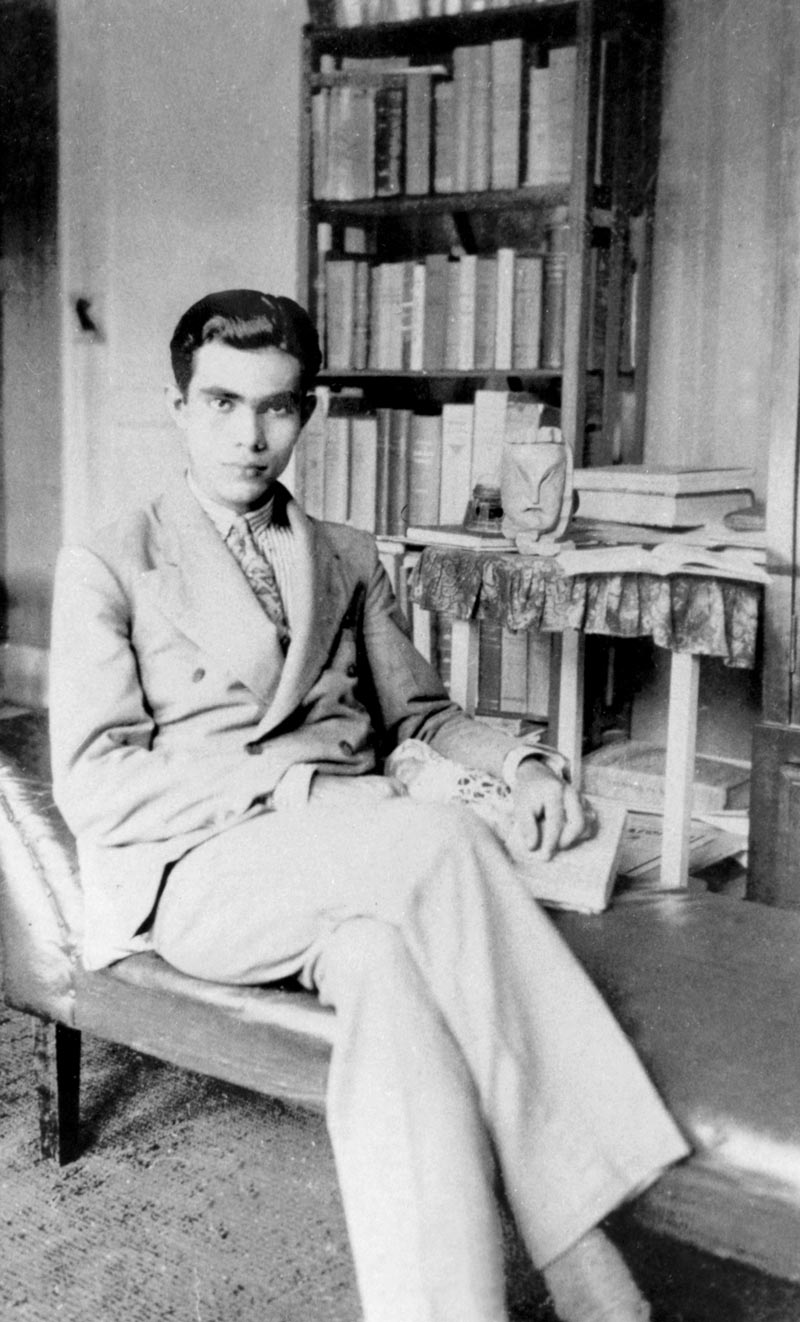
Josué de Castro – Joaquim Nabuco Foundation Collection – Ministry Of EducationPortrait from 1926, when he studied medicine in BahiaJosué de Castro – Joaquim Nabuco Foundation Collection – Ministry Of Education
“This combination resulted in low food production in the latifundia, preserved archaic labor relations and heirs of slavery, and thrust peasants into degrading living situations, hindering their access to arable land,” comments sociologist Ricardo Abramovay, Josúe de Castro chair holder at the University of São Paulo’s School of Public Health (FSP-USP) and author of the book O que é fome (What is hunger?; Brasiliense, 1983).
In Geography, translated into more than 25 languages, Castro concluded that the solution to the hunger issue must involve agrarian reform. “He was one of the world’s most respected authorities on this issue,” comments Abramovay. “At an academic gathering in 1982 in France, I met people who said they read Josúe de Castro in school,” recalls Abramovay.
In the 1940s, Castro studied the origins and consequences of hunger in the United States, Argentina, Mexico, and France, at the invitation of their respective governments. In 1951, he published The Geopolitics of Hunger, which examines the world’s food deficiencies and inadequacies. Awarded the following year by the American Academy of Political and Social Sciences (AAPSS), it was also published in the then Soviet Union.
Castro enrolled in the Faculty of Medicine of Bahia when he was 15 years old and completed the course in 1929 at what was then called the Rio de Janeiro University, now known as the Federal University of Rio de Janeiro. He returned to Recife and was hired in 1932 as a physiology professor at the Faculty of Medicine. He was 24 years old.
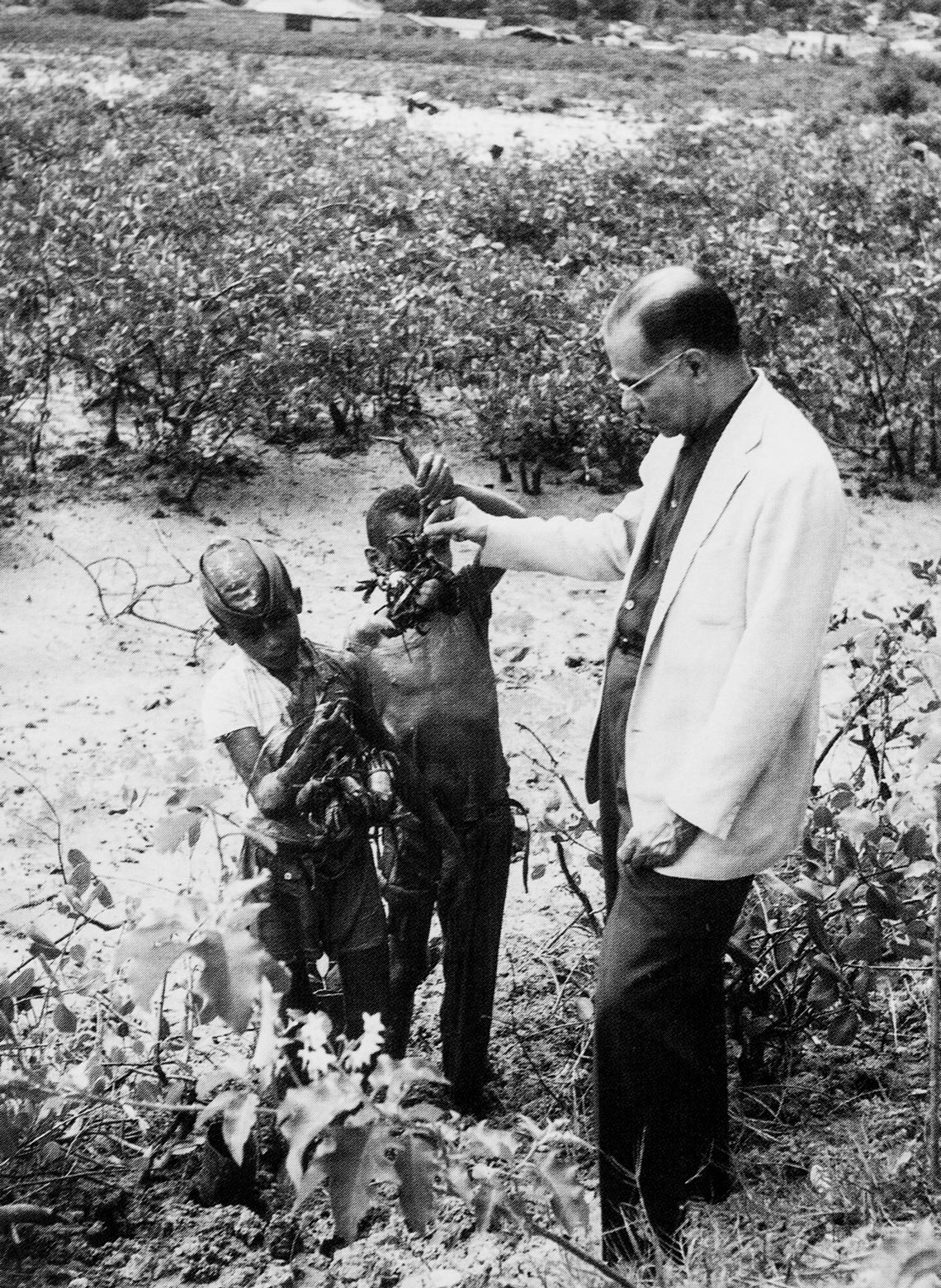
Reproduction of Josué de Castro: Por Um Mundo Sem Fome, by Francisco Reginaldo de Sá Menezes (Mercado Cultural, 2004)In the mangroves in Recife (1967)Reproduction of Josué de Castro: Por Um Mundo Sem Fome, by Francisco Reginaldo de Sá Menezes (Mercado Cultural, 2004)
Three years later, he researched the living conditions of workers in the capital of Pernambuco and concluded that they had chronic fatigue due to poor diet and, sometimes, died from diseases associated with hunger, such as anemia, hypothyroidism, and infectious diarrhea. At that time, only diabetes, obesity, gout, and rheumatism were associated with malnutrition.
As an autodidact, Castro studied geography and anthropology. His teaching and research were the first steps towards higher education. As there was a lack of experts in these two areas, he was recognized for his erudition, allowing him to teach anthropology at the University of the Federal District, in Rio de Janeiro, from 1935 to 1938. Two years later, replacing a professor who had returned to France, he took over as chair of human geography at the University of Brazil.
In 1940, during the New State (1937–1945), he spent two years helping plan and direct the Social Security Food Service, through which the government intended to solve the food issue, mainly for the working class—one of the measures implemented was creating restaurants with very low-priced meals. That same year, Castro took over as president of the newly created Brazilian Society for Food, aimed at promoting studies and actions to improve the population’s eating habits.

Josué de Castro – Joaquim Nabuco Foundation Collection – Ministry of EducationOn a training trip in Miami, United States (1943)Josué de Castro – Joaquim Nabuco Foundation Collection – Ministry of Education
Until the mid-1950s, he worked as a physician specializing in nutrition, practicing in a clinic. In what was then the federal capital, he rubbed shoulders with the political elite and became a doctor for the family members of Getúlio Vargas (1882–1954). From 1952 to 1956, he chaired the Executive Board of the Food and Agriculture Organization of the United Nations (FAO). Friends say that he was disappointed with the malnourished international bodies that were supposed to fight hunger, but that could do almost nothing.
In 1954, he was elected federal deputy for Pernambuco by the Brazilian Labor Party (PTB), the same party that supported Vargas. Reelected in 1958, he intended to make government officials aware of the hunger issue but was disappointed when he saw his colleagues in Congress defend the interests of large rural landowners, according to geographer José Raimundo Ribeiro Junior, of the Federal University of ABC (UFABC). “Gradually, he began to see social movements as a way to overcome hunger.”
Castro realized that agrarian reform was only possible with organization and public pressure but argued that structural changes should be made through democratic institutional pathways. “He believed in dialogue with the elites while simultaneously becoming more involved with social movements, such as the Peasant Leagues,” emphasizes Leme. The physician was close to Juscelino Kubitschek (1902–1976), President of the Republic from 1956 to 1961, and to intellectuals linked to the Brazilian Communist Party, “but, politically, he was never a revolutionary,” says the USP researcher. “Josúe de Castro was a humanist socialist, but not a communist,” reiterates historian Marina Gusmão de Mendonça, of the Federal University of São Paulo (UNIFESP). “He did not accept any form of dictatorship, not even that of the proletariat.”
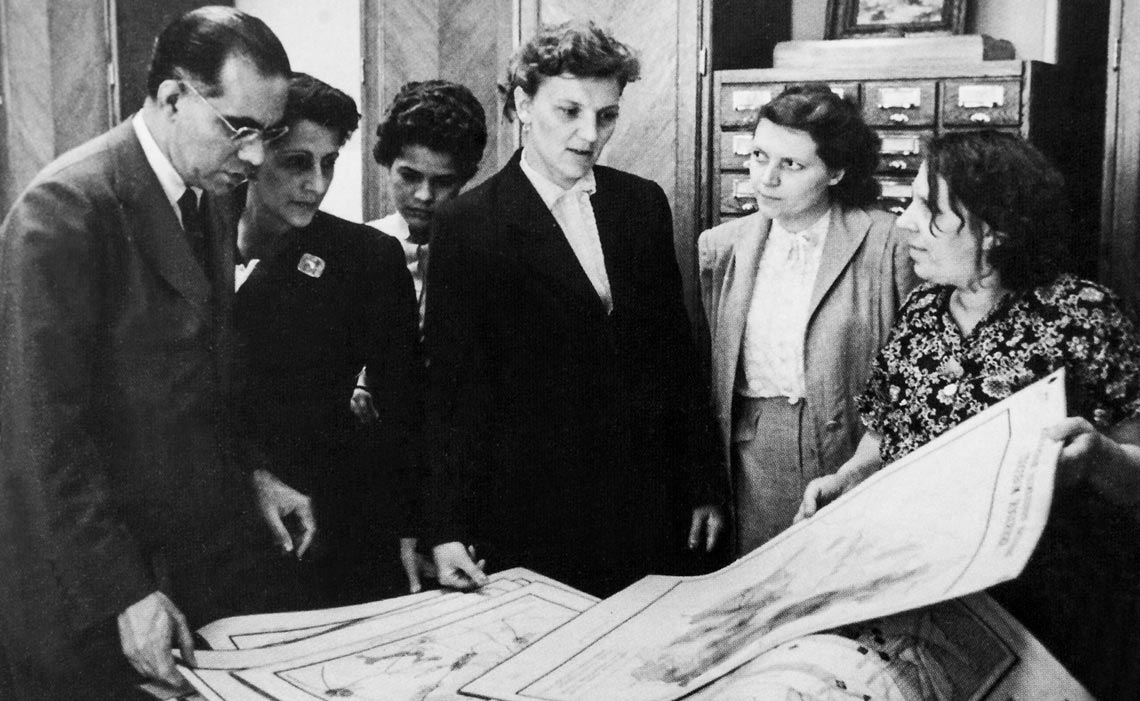
Reproduction of Josué de Castro: Por Um Mundo Sem Fome, by Francisco Reginaldo de Sá Menezes (Mercado Cultural, 2004)On a visit to what was then the Soviet Union, in 1955Reproduction of Josué de Castro: Por Um Mundo Sem Fome, by Francisco Reginaldo de Sá Menezes (Mercado Cultural, 2004)
The nuances didn’t matter. Military authorities of the 1964 coup saw him as subversive and placed him on the first list of exiles. Since 1962, Castro had been Brazilian ambassador to the UN in Geneva, Switzerland, and was removed from office. He moved to France, where he became a professor at the University of Paris. In 1965, he founded the International Center for Development (CID) in Paris, which he chaired until 1973, providing advice to governments in developing countries. Before he died of a heart attack, in September of 1973, he returned to Brazil two times for quick visits to family members, “always accompanied by the military dictatorship’s surveillance agencies,” notes Amorim.
According to historian Leme, of USP, the physician also made mistakes. “Castro underestimated the native people of Amazônia’s ability to obtain their own food, because he viewed them through a Eurocentric lens, ignoring Indigenous knowledge about food, which he considered precarious and deficient,” she says. Despite any mistakes, she says, his work remains relevant.
“If at the time of Josúe de Castro, hunger had a lot more to do with food supply than demand, today it stems from the inability of the agrifood system and governments to allow food to reach people who need it at low cost,” says Abramovay. The physician from Pernambuco argued that increasing food production would not be enough if portions of the population cannot afford to buy it. “He defended agriculture that could adequately feed the population and that did not just prioritize exporting commodities [primary goods of agricultural, livestock, mineral, and environmental origin],” comments Mendonça. Leme, in turn, notes: “The way that Castro saw hunger, linked to economic, social, and political structures, is now commonplace.”

Josué de Castro – Joaquim Nabuco Foundation Collection – Ministry Of EducationReceiving the Global Citizen Award in Paris (1968)Josué de Castro – Joaquim Nabuco Foundation Collection – Ministry Of Education
According to geographer Bernardo Mançano Fernandes, of São Paulo State University (UNESP), his work and political involvement inspired programs to combat hunger not only in Brazil, but also in other Latin American and African countries. “But the debate he sparked took half a century to produce concrete results.” According to Fernandes, there is a relationship between Castro’s proposals and the programs to combat hunger created in 2003.
According to Amorim, his ideas are also the root of Citizenship’s Action Against Hunger, created by sociologist Herbert José “Betinho” de Sousa (1935–1997), and Manguebeat, a cultural movement that values Northeastern culture. According to the historian, one of the movement’s leaders, singer and composer Francisco de Assis França, better known as Chico Science (1966–1997), cited Josúe de Castro “in several songs produced throughout the 1990s at the height of neoliberalism in Brazil, when the issue of hunger was intensifying in the country.”
Republish